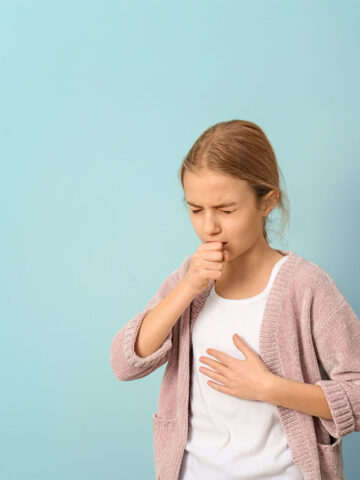Given the growing prevalence of the highly contagious omicron variant of COVID-19, so-called “breakthrough infections” in fully vaccinated people are likely. So, what should families do when a parent gets sick from COVID-19?
First, parents should cut themselves some parenting slack at this time, says Dr. Reshmi Basu, a CHOC pediatrician. While all children benefit greatly from routine and stability, now is not the time for parents to stress over turning to screen time or frozen foods more frequently than usual.
Parents also ought not to beat themselves up for getting COVID-19, she says. Given the variant’s high infection rate, even people who did everything they could to protect themselves and their families against COVID-19 might still get sick. Having COVID-19 is not a moral failing, Dr. Basu says.
Now, onto practical matters. Here, Dr. Basu walks through a variety of steps families in different situations can take should someone in the household contract COVID-19:
Scenario 1: Everyone in the household is healthy and negative for COVID-19.
This is ideal, but now’s the time to prepare. Families should have a plan in place for supplies, environmental changes and back-up childcare, should one or both parents get sick.
Scenario 2: One parent is sick with COVID-19, but another parent is well and able to care for children.
If the sick parent isn’t able to stay elsewhere entirely, they should try to separate themselves at home from other people and animals as much as possible. Try staying in another room and keeping the door closed. Have the well parent deliver food and water to this room.
If anyone needs to enter the sick person’s space, both people should wear a high-quality mask and open windows, if possible. The well person should act efficiently and avoid touching their face while in the room. Thoroughly wash hands after leaving the sick person’s room.
If the sick person needs to leave the room, they should wear a high-quality mask at all times, and everyone should mask in shared spaces.
If the home has more than one bathroom, designate one for the sick person. If this isn’t possible, the sick person should wear a mask while using the bathroom. Disinfect shared surfaces like toilet seats and handles, faucet handles, soap dispensers, counters and light switches after they use it.
Younger children may have a harder time being separated from one parent. Use age-appropriate language to explain to the child that the parent is sick and needs some rest, and that they will see them soon when they are better.
Finally, be mindful that even if this plan is followed perfectly, other members of the household could have already been exposed and could become ill later.
Scenario 3: A single parent or both parents in the household gets sick with COVID-19.
Now is the time to rely on healthy adult friends, families or neighbors to help care for the children.
If this is not possible, parents can try their best while taking all precautions against further spreading COVID-19 throughout the home. They ought to isolate themselves as best as possible, but wear high-quality masks when interacting with children. Have children wear masks when they are around the parents. Everyone should wash hands often and thoroughly. Try to keep the space ventilated, if possible. Frequently clean high-touch surfaces.
If the sick parent or parents feel too ill to care for their children and no other adult is available to support, they should call 211 to get help connecting with local resources.
Scenario 4: A breastfeeding parent is sick with COVID-19.
Parents can still continue breastfeeding but should take additional precautions to prevent the spread of COVID-19 to a vulnerable infant.
The parent should wash their hands with soap and water for 20 seconds before touching the infant, pumping equipment or feeding supplies. If using a breast pump, washing hands before touching the pump and following CDC recommendations for cleaning the pump after each use.
They ought to wear a face mask when breastfeeding, pumping or handling the baby.
Follow current CDC guidelines for proper breastmilk handling and storage.
If bottle feeding pumped breast milk, have someone who is well feed the baby, if possible.
Although there’s limited research available on whether COVID-19 is transmitted via breastmilk, studies on similar viruses did not find the virus in the milk. Additionally, the baby may get some protection against COVID-19 from the antibodies contained in breast milk.
Scenario 5: A child gets sick with COVID-19 and parents are well to care for them.
Like scenario no. 2, parents should try to isolate the child as best they can and remain vigilant in mitigating potential spread. This includes keeping the sick child away from other children in the family.
Keeping children cooped up indoors is no small feat. If they are feeling well, they can take a walk outdoors for fresh air but should wear a mask and keep distance from others.
Get more expert health advice delivered to your inbox monthly by subscribing to the KidsHealth newsletter here.
Learn more about COVID from CHOC’s pediatric experts
Get answers to your frequently asked questions – and some peace of mind – with this complete guide to COVID-19 from CHOC pediatric experts.





